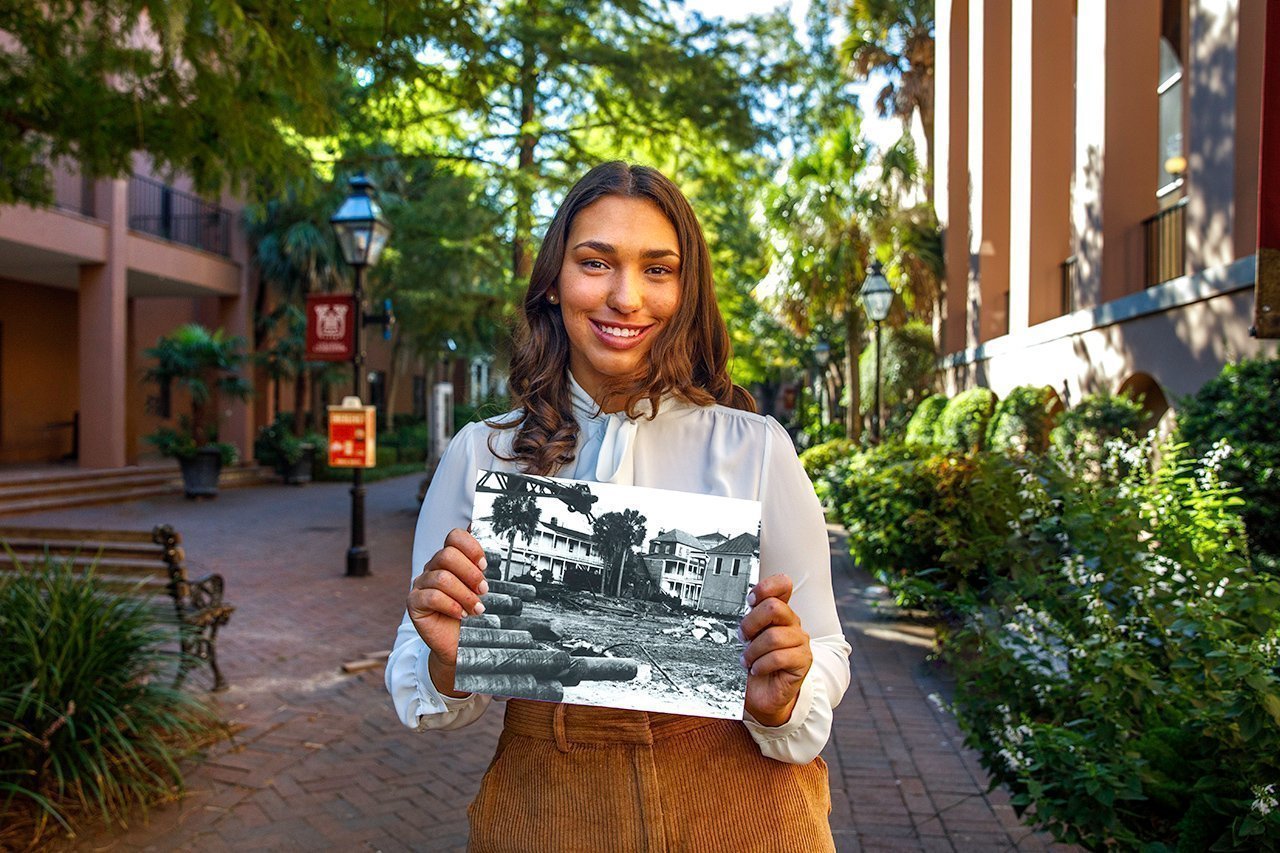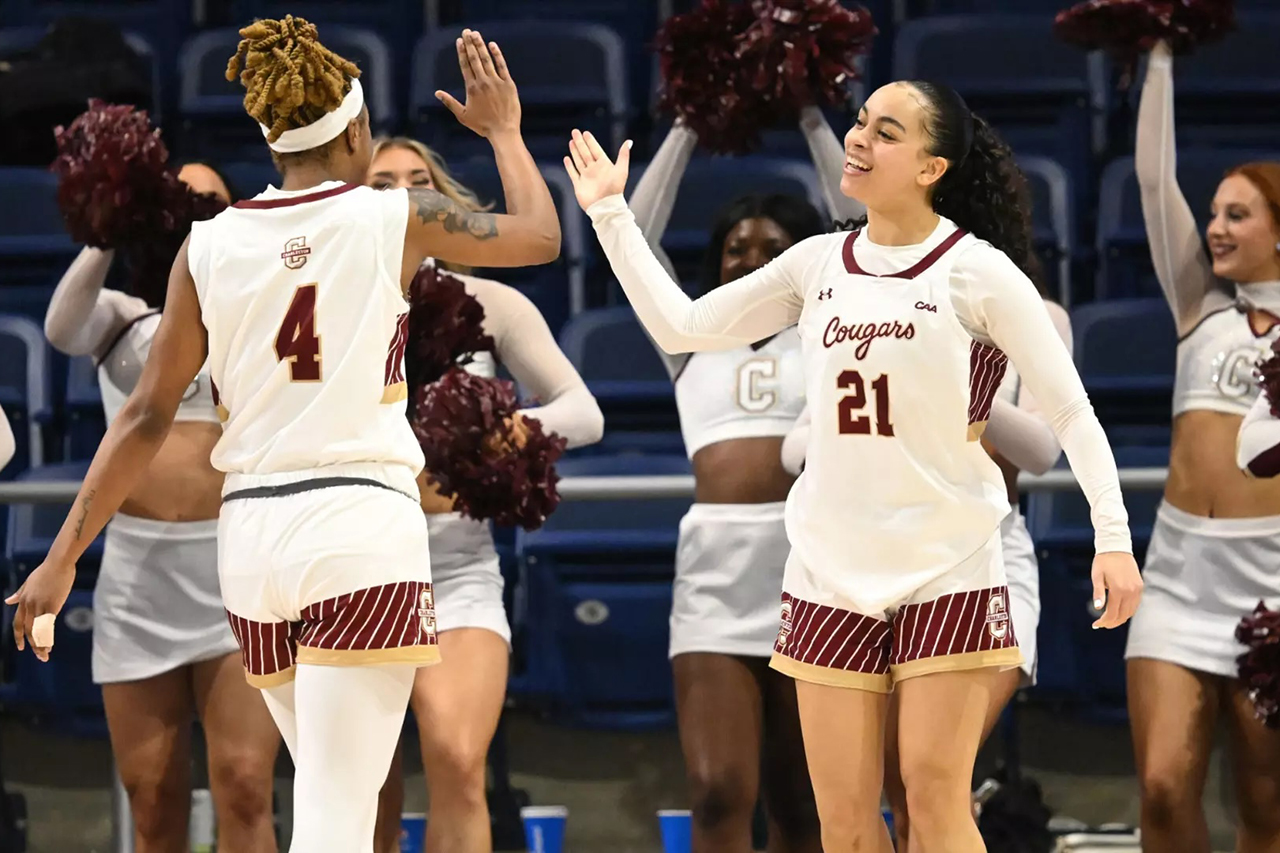CofC Student's Campus Research Is a Historic Undertaking
Poring over old maps, census data and photos, senior Gabby Rowsam wrote an eye-opening 108-page paper on all the homes – and the people – that had to give way to the growth of CofC.

Between Randolph Hall, Towell Library, Porter’s Lodge and the 90 historic homes built between 1770 and 1940 that now serve as faculty offices and student housing, the College of Charleston campus has no shortage of historic buildings.
Or so you’d think.
But, when Gabriella Rowsam started digging around, she learned that the number of historic structures the College has preserved on campus doesn’t come close to how many it has demolished over the years. In fact, in the main block of campus alone (enclosed by Calhoun, St. Philip, George and Coming streets), at least 115 historic structures have been demolished since 1888 – that’s more than 82% in the space of just 133 years.
“Just the vast number of houses that have been on this block was hard for me to imagine – and they’re all just gone,” says the senior double-majoring in art history and historic preservation and community planning. “It’s that their history had disappeared with them that’s so mind-boggling, though. They aren’t part of the historical narrative of our campus; they’re absent from our history books. It’s kind of insane to me that no one has logged this before.”
And so Rowsam took it upon herself. She spent the spring 2021 semester poring over Sanborn Fire Maps, photographs, census data, College of Charleston surveys and reports as well as photographs and news articles she found in Special Collections and the Lowcountry Digital Library.
“When I started finding the pictures of these houses, that was kind of what brought it all together for me – that the history of campus is so much more than what we see,” says Rowsam, who has interned with the Chester County Historical Society, the Preservation Society of Charleston and with Brittany Lavelle Tulla, who teaches in the art and architectural history department. “It was really interesting. I really, really enjoyed it. Honestly, this is the kind of thing I live for.”
“I know Gabby’s passion for research and her passion for finding untold stories and telling the stories that need to be told,” says Lavelle Tulla. “So, when she came to me with her idea to study this, you could just tell that she was going to do this, no matter what.”
And so she did – and, by the end of her semester-long independent study, she had compiled a 108-page paper and presentation covering not just the architectural history of the buildings, but the stories of the people who occupied them and the circumstances that led up to their demolition.
It was in the 1970s, when the College became a state institution and began to expand its footprint into the surrounding Harleston Village neighborhood, that the bulk of the demolition took place, making way for more modern buildings to attract not just state funding but students, too.
“The school needed to grow and it makes sense that this is how campus evolved,” says Rowsam. “None of these buildings were anything grand – they weren’t huge mansions or anything. They were just tenements and everyday houses with everyday people living in them. But they were people’s homes. This is where they lived their lives – and just for it to be completely ripped apart one day is crazy to think about. When you start humanizing it a little bit, it really gets to you. You just want to know more.
“You think that, with all the history of Charleston, everything must have been uncovered, but it hasn’t been,” she adds. “There’s always even more to be learned.”
And that’s why, after she graduates this May, she wants to continue her research in the joint master of historic preservation program between the College and Clemson University. She also hopes to work with the College to better interpret the campus’ historic landscape and guide visitors through its evolution.
“I definitely love this school, and I wouldn’t change anything about it today,” she says. “But it’s interesting to look back and remember what we all came from and how we got here. History doesn’t always tell the whole story. But someone has to.”
And she knows just the person to do it.



